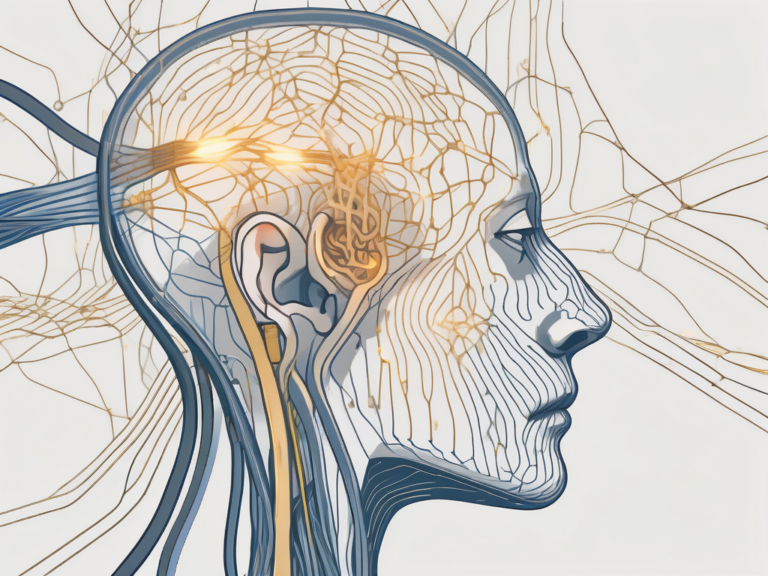The Best Time to Cut Nails: Debunking the Myth of Cutting Nails at Night
Do you find yourself hesitating to cut your nails at night? Are you a firm believer in the myth that cutting nails after dark brings bad luck or even invites evil spirits? Well, it’s time to shed some light on this long-standing myth and uncover the truth about the best time to trim those nails.
Understanding the Nail Cutting Myth
Let’s delve into the fascinating origins of this belief and the interesting cultural beliefs surrounding it.
The Origin of the Myth
The myth of cutting nails at night has its roots in ancient folklore. It was believed that evil spirits lurked in the darkness and could attach themselves to the nail clippings, causing harm and misfortune.
Legend has it that in a small village nestled deep in the mountains, there lived a wise old woman known for her mystical powers. She would often warn the villagers about the dangers of cutting nails at night. According to her, the darkness provided a gateway for malevolent spirits to enter the realm of the living. These spirits, she claimed, were attracted to the discarded nail clippings, which they would use as vessels to wreak havoc on unsuspecting individuals.
As time went on, this superstition was passed down through generations, ingrained in our minds as an unwavering truth. Parents would caution their children against the act, fearing the consequences that might befall them if they dared to defy this age-old belief.
The Beliefs Surrounding the Myth
Various cultures around the world have their own unique beliefs related to cutting nails at night. Some believe that it brings financial loss, while others associate it with the onset of illness or even death. These deeply ingrained beliefs make it challenging for many to break free from the notion.
In some cultures, it is believed that cutting nails at night can disrupt the delicate balance of energy in the body, leading to an imbalance that can manifest as physical or mental ailments. The darkness of the night is seen as a time when the body is in a vulnerable state, making it more susceptible to negative energies.
Interestingly, there are also cultural beliefs that associate cutting nails at night with attracting bad luck or inviting the presence of supernatural beings. In certain communities, it is believed that the sound of nail clippers cutting through the darkness can awaken restless spirits, causing disturbances in the household.
While these beliefs may seem far-fetched to some, they hold great significance in the lives of many individuals. The power of cultural traditions and superstitions should not be underestimated, as they shape our perceptions and behaviors in ways that often defy logic.
The Science of Nail Growth
Now let’s explore the fascinating biology behind nail growth and the factors that affect it.
The Biology of Nails
Nails, made up of a protein called keratin, are an integral part of our body. They not only protect our fingertips but also serve as a reflection of our overall health.
But did you know that the growth of nails is not the same for everyone? It varies depending on factors such as genetics, lifestyle, and even the season. Some individuals may have nails that grow faster, while others may experience slower growth.
So, how does the process of nail growth actually work? It all starts in the nail matrix, which is located at the base of the nail. This matrix contains specialized cells that divide and multiply, pushing the nail forward. As the new cells are produced, they harden and form the visible part of the nail.
Factors Affecting Nail Growth
Several factors can influence the rate at which our nails grow. Nutrition, age, hormonal changes, and certain medical conditions can all impact the speed of nail growth.
Let’s delve deeper into these factors. Nutrition plays a crucial role in nail growth. A well-balanced diet rich in vitamins, minerals, and proteins provides the necessary building blocks for healthy nail growth. Deficiencies in nutrients like biotin, zinc, and iron can lead to slower nail growth and even brittle nails.
Age is another factor that affects nail growth. As we get older, the rate of cell division in the nail matrix slows down, resulting in slower nail growth. Hormonal changes, such as those that occur during pregnancy or menopause, can also impact nail growth. These changes can cause nails to grow faster or slower, depending on the individual.
Additionally, certain medical conditions can influence nail growth. Conditions like psoriasis, thyroid disorders, and fungal infections can disrupt the normal growth cycle of nails, leading to changes in their appearance and growth rate.
Contrary to popular belief, the time of day does not play a significant role in determining the growth rate of nails. While some may claim that nails grow faster during the day and slower at night, there is no scientific evidence to support this notion. The growth of nails is primarily influenced by the factors mentioned above, rather than the time of day.
The Ideal Time for Nail Cutting
When it comes to choosing the best time to cut your nails, it’s all about finding what works best for you. However, there are a few additional factors to consider that can help you achieve optimal nail care.
Considering Your Personal Schedule
We all lead different lives, with varying daily routines. What matters most is finding a time slot that allows you to give proper attention to your nail care regimen. Whether it’s morning, afternoon, or evening, consistency is key. By incorporating nail cutting into your regular routine, you ensure that your nails receive the attention they deserve.
For example, if you have a busy morning schedule, you may find it more convenient to trim your nails in the evening when you have some downtime. This way, you can relax and focus on the task at hand without feeling rushed or distracted.
Evaluating Your Nail’s Condition
Instead of fretting over the time of day, focus on the condition of your nails. It is recommended to trim them when they are dry and easy to manage. Moisturized nails are more prone to breakage, so it’s best to avoid cutting them immediately after bathing.
However, it’s important to note that the ideal time for nail cutting may vary depending on your individual circumstances. For instance, if you have just finished a strenuous workout or engaged in activities that put stress on your nails, it may be beneficial to wait until they have had a chance to recover before trimming them.
Additionally, if you have recently applied nail polish or any other nail treatments, it’s advisable to wait until they have fully dried and set before attempting to cut your nails. This ensures that you achieve a clean and precise cut without damaging the polish or treatment.
By taking into account both your personal schedule and the condition of your nails, you can determine the ideal time for nail cutting that works best for you. Remember, consistency and proper care are the keys to maintaining healthy and beautiful nails.
The Risks of Cutting Nails at Night
While the myth of cutting nails at night may not hold true, it’s essential to consider potential risks associated with nighttime nail care.
When it comes to cutting your nails at night, there are a few factors that you should keep in mind. One of the primary concerns is visibility and safety. Dimly lit rooms can make it difficult to ensure a precise and safe trim. Without proper lighting, you may struggle to see the edges of your nails clearly, increasing the risk of accidental cuts and injuries. It’s crucial to have adequate visibility to maintain the safety of your nail care routine.
Another risk to consider is the potential for infection. While cutting your nails at night doesn’t directly lead to infections, it’s important to maintain clean tools and a hygienic environment. Regardless of the time of day, you should always ensure that your nail clippers are properly sanitized before every use. This precaution helps minimize the risk of introducing harmful bacteria or fungi into your nails, which can lead to infections.
Additionally, it’s worth noting that the condition of your nails can vary throughout the day. Factors such as temperature, hydration levels, and physical activities can affect the flexibility and strength of your nails. By cutting your nails at night, you may be missing out on the opportunity to assess their condition during the day when they are more likely to be in their natural state.
Furthermore, the act of cutting your nails can be a relaxing self-care ritual for many individuals. By doing it during the day, you can take advantage of the natural light and create a soothing atmosphere to enhance your nail care experience. This can contribute to a more enjoyable and satisfying self-care routine.
Debunking the Myth: Cutting Nails at Night
Let’s now explore the scientific evidence that disproves this long-standing myth and share perspectives from different cultures.
Scientific Evidence Against the Myth
A thorough examination of scientific literature reveals no concrete evidence supporting the belief that cutting nails at night brings negative consequences. These claims are purely based on superstition and lack scientific backing.
However, it is worth noting that the myth may have originated from a time when artificial lighting was not as prevalent as it is today. In the past, cutting nails in low light conditions could have increased the risk of injury. But with the advent of modern lighting, this concern is no longer relevant.
Cultural Perspectives on the Myth
It is intriguing to explore the varied cultural perspectives on nail cutting. Some cultures consider it a sacred act to be performed during particular astrological alignments, while others have no specific restrictions related to the time of day.
In certain cultures, cutting nails at night is believed to bring bad luck or invite evil spirits. This belief stems from the notion that darkness is associated with negative energies. On the other hand, there are cultures that view nail cutting at night as a symbol of beauty and elegance, as it is believed to enhance the shine and strength of the nails.
In India, for example, there is a traditional belief that cutting nails on certain days of the week can affect one’s fate. It is believed that cutting nails on Tuesday or Saturday can bring financial losses, while cutting them on Wednesday is considered auspicious for business ventures. These cultural beliefs highlight the diverse perspectives surrounding nail cutting practices.
Practical Tips for Healthy Nail Care
Now that we have debunked the myth, here are some practical tips to ensure your nails stay healthy and beautiful.
Tools for Proper Nail Cutting
Investing in high-quality nail clippers or nail scissors is crucial for maintaining the health of your nails. Ensure they are sharp and clean to achieve a precise and safe trim.
Maintaining Nail Health and Hygiene
Keep your nails clean and well-groomed to minimize the risk of infections. Regularly moisturize your cuticles and avoid using harsh chemicals that can damage your nails.
But let’s delve deeper into the world of nail care, shall we? Did you know that the shape of your nails can actually reveal a lot about your overall health? It’s true! For example, if your nails are brittle and prone to splitting, it could be a sign of a nutrient deficiency, such as a lack of biotin or vitamin C. On the other hand, if your nails are yellowish and thick, it might indicate a fungal infection. So, paying attention to the appearance of your nails can provide valuable insights into your well-being.
Furthermore, did you know that your nail health can be influenced by external factors as well? For instance, excessive exposure to water and harsh chemicals, such as cleaning agents or nail polish removers, can weaken your nails and make them more susceptible to breakage. Therefore, it’s important to wear protective gloves when engaging in activities that involve prolonged contact with water or chemicals. Additionally, giving your nails a break from nail polish every now and then can also help maintain their strength and integrity.
Remember, taking care of your nails is not about the time of day; it’s about maintaining good habits and paying attention to their overall condition.
In conclusion, the belief that cutting nails at night brings bad luck or invites evil spirits is nothing more than a myth. The time of day does not impact the growth rate of your nails nor does it determine the outcome of your endeavors. So, next time you find yourself contemplating a nighttime nail trim, go ahead and do it without hesitation. Focus on maintaining cleanliness, using proper tools, and prioritizing your nail’s health. With knowledge and understanding, you can set yourself free from the clutches of superstition and embrace healthy nail care habits at any time of the day or night.






